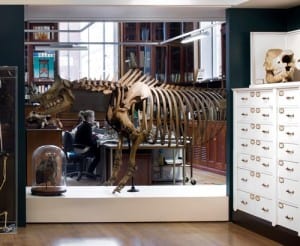Specimen of the Week: Week 163
By Will J Richard, on 24 November 2014
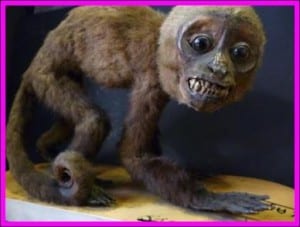 Hello again! It’s me, Will Richard.
Hello again! It’s me, Will Richard.
Here for the second time doing my best to keep up the Grant’s grand traditions, but I’m afraid I must begin with an admission. I think I’ve made a mistake. Last month I made my blogging debut with a potto and it seemed like such a good idea at the time. Now, however, I’m faced with quite a problem. What can follow the potto?
Pacing the museum and racking my brains, peering into cases with increasing desperation, I am spoilt for choice so there’s no need to panic… let’s be logical. The potto is a teddy bear and where do you go when a teddy fails? A friend! Maybe even a best friend…
This week’s specimen of the week is: Read the rest of this entry »
Through the Looking Glass Sponge
By ucwaemo, on 18 November 2014
Since joining the Museum as artist in residence last month, I’ve spent a lot of time looking through glass. I’ve looked through the plate glass cabinets protecting the specimens, the thickly blown glass of the specimen jars, and finally the specimens themselves: glass sponges. These creatures are 90% silica, formed of threads of glass spicules. They are usually found in the dark depths of the ocean, but up in the spotlights of the Museum they glow – a bright shelf of organic glass. Their structure is so intricate that I have to use even more layers of glass to be able to see them: reading glasses, magnifying glasses, and my recently acquired endoscope (excellent for getting round those awkward sponge corners). With all these layers of glass, reflection becomes an issue – in photographs, my face or the camera lens can appear, and viewed at certain angles even the specimen seems to be looking at its own reflection within the glass jar.
Last week I put together a pinhole camera for one of the specimens. Pinhole cameras are made of a light-sealed box with photosensitive paper inside, and a small pinhole on the opposite side. The pinhole acts like the shutter of a camera – you aim the pinhole at whatever you want to capture and the light travels through the pinhole to the photosensitive paper inside the box, which is then developed in the darkroom and the image appears. I wanted to try putting the specimen inside the pinhole camera, with photosensitive paper surrounding it. I hoped that by doing this I would get a 360 degrees photogram of the glass sponge. However, the glass sponge and its jar had other ideas.
Here are some photograms I took of the Museum’s Walteria leuckarti. Read the rest of this entry »
Specimen of the Week: Week 162
By Mark Carnall, on 17 November 2014
Cthulhu the ammonite lovingly stroked Mary Sue the trilobite on the cephalon with his tentacles.
“I love you Mary Sue.” Exclaimed Cthulhu, expelling a distressed squirt from his hypernome.
“Why won’t our parents let us be together?” Asked Mary Sue, the thousands of lense units unblinking in her holochroal eyes.
” So what if I’m a trilobite and you’re an ammonite? Our love is true. Why can’t we be together?”. She flexed her gnathobases in frustration.
“It’s this senseless war…” Suddenly Cthulhu was cut off by a large shadow descending on the pair…
This is an extract from my (currently seeking a publisher) fanfiction novel Ancient War about an ammonite and a trilobite that, despite their biological differences, find love in the middle of an all out war between their families. It was inspired by my choice of specimen of the week, an innocuous little chap from the bottom of case 9. This week’s specimen of the week is..
18th Grant Lecturer: Anjali Goswami
By Dean W Veall, on 14 November 2014
Dean Veall here. On Tuesday this week Team Grant celebrated what would have been Robert Edmond Grant‘s 221st birthday in the a suitably zoological manner raising a glass of sparkling cider (non-alcoholic, of course!). The formal celebration of Grant’s life and his contribution to science is coming up next Tuesday 18th November with our annual Grant Lecture, now in its 18th year. This year we are incredibly excited and pleased to welcome Dr. Anjali Goswami, Reader of Palaeobiology at UCL, to give the lecture and the following is a bit of profile/preview of the her and her lecture.
Anjali Goswami’s research revolves around the contrasts between the early evolution of placental mammals (e.g. humans, cats and whales) and marsupials (e.g. kangaroos, wombats, opossums).
Focus on the Positive goes global and local
By Dean W Veall, on 13 November 2014
Guest blogger: Hilary Jackson
An unseasonably warm October evening found the Focus on the Positive team returning to our favourite host venue, the Grant Museum of Zoology. But who would win the audience’s heart (and vote)?
Grant Museum host Dean Veall and a devoted audience welcomed another four determined UCL researchers to pitch their ideas to make the world a better place.
The audience came from across London to pick their favourite project to win a prize of £2000. But with four inspiring ideas to choose from, who would be the winner?
A stuffed Hippopotamus of 1829 at large at UCL
By Mark Carnall, on 12 November 2014
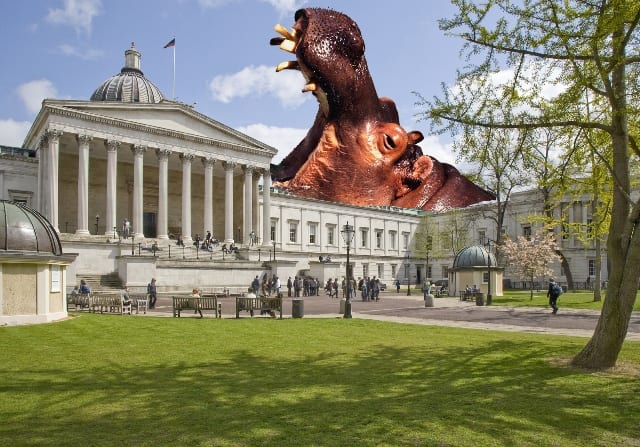
Hippo at large at UCL, a poorly photoshopped one too which is a much rarer subspecies. Artist’s reconstruction (also available for palaeontological reconstructions)
Part of my job at the Grant Museum is to document and inventory the collection we have here. With over 68,000 specimens (a modest collection when it comes to natural history) this is no small task given that creating a catalogue of the collection only began some 70 years into the collection’s history and the attempt to document the collection to current museum standards only began in the 1990s. A lot of the frustration is that the collection was very much a teaching and research collection for most of it’s life and the core data about the who’s, what’s, where’s, and why’s – information that is invaluable to make the most of the collection today – was inconsistently recorded if at all.
Recently, whilst looking through our paper archive excavating information for a scientific research request, I found a fantastic document, a summary of all the benefactions in kind made to UCL between 1828 and 1914, right from when the University was first founded. I thought I’d struck gold finding this itemised list of objects and specimens benefacted to UCL and perhaps this would hold some key information about who gave what to UCL, some of which ended up in the Grant Museum. What was shocking however was how much seems to have… ahem… been mislaid between then and now. Not just the odd bones or shell here and there but whole stuffed hippos and more…
Specimen of the Week: Week 161
By Tannis Davidson, on 10 November 2014
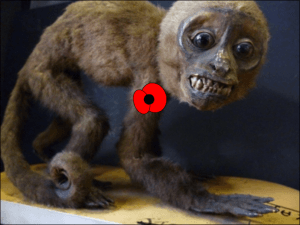 Last week, my colleague Jack Ashby wrote in effort to promote the under-promoted in the animal kingdom –the non-superstars that do not, at first glance, appear to be particularly special or worthy of fame and fortune. This week I would like to advance this theme by highlighting an animal that is often overlooked as not only a superstar but a veritable animal superhero.
Last week, my colleague Jack Ashby wrote in effort to promote the under-promoted in the animal kingdom –the non-superstars that do not, at first glance, appear to be particularly special or worthy of fame and fortune. This week I would like to advance this theme by highlighting an animal that is often overlooked as not only a superstar but a veritable animal superhero.
This week’s Specimen of the Week is… Read the rest of this entry »
Name our Rhino on the Run
By Jack Ashby, on 6 November 2014
The largest single specimen in the Museum – our (hornless) Indian one-horned rhino – is about to go on holiday. He is going away for some serious conservation work. You might call it health tourism.
The rhino entered the Museum as an un-mounted skeleton in 1910-11 when the University of London Loan Collection was disbanded. The Museum then paid £14 to have him, the seal, the bear and “a zebra” (possibly the quagga) mounted onto iron frames. Since then, the rhino has been on open display in the Museum, and the iron is slowly corroding.
This year, as part of a major project called Bone Idols: Preserving our Iconic Skeletons, 39 of our largest specimens are undergoing conservation treatment. Some need intensive cleaning to remove the damaging pollutants and particulates that have built up over up to 180 years on open display; some also need repairs to certain body parts. Some, like the rhino and quagga, need to be totally disassembled, cleaned, and then repositioned on new skeleton-friendly metal frames, with all his joints correctly matching up.
All of this work will allow us to safe-guard our irreplaceable collection for the long-term future and continue to use it every day for teaching, research and public engagement.
There are two exciting opportunities coming up as a result… Read the rest of this entry »
Grant Museum Show’n’Tell: Soda Lakes
By Dean W Veall, on 5 November 2014
Dean Veall here. Over the last year I’ve been hosting our new lunch hour event series Show’ n ‘ Tell, with PhD students from across UCL sharing some of their amazing research and choosing just one object from our collection of 68,000 to tell the the assembled audience what they know about it. If you couldn’t make it to our last event, fear not, Irrum Ali from UCL Communications and Marketing came along and here’s what happened.
Specimen of the Week: Week 160
By Jack Ashby, on 3 November 2014
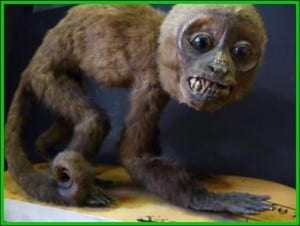 We all know that in this world of competing stimuli, an animal really needs to work hard to get people interested, achieve celebrity status in the media, and ultimately realise the dream that all animals hold – to star their own bank, crisps or cereal advert.
We all know that in this world of competing stimuli, an animal really needs to work hard to get people interested, achieve celebrity status in the media, and ultimately realise the dream that all animals hold – to star their own bank, crisps or cereal advert.
We trade in animal USPs every day… We talk about the biggest/smallest/rarest/fastest/ugliest/deadliest, and this is what gets aspiring animal stars into the And Finally… sections of the news.
The A-Team of animal superlatives is well established, and so today I am acting (for a commission) to promote the under-promoted of the animal world. This Australian marvel has a long list of “-est”s to its name.
This week’s Specimen of the Week is… Read the rest of this entry »
 Close
Close



